Iraq in Photos: Then and Now
Associated Press photographer Maya Alleruzzo revisited places in Iraq where photos from the contentious war had been previously taken. To mark the 10th anniversary of the second Iraq War, Alleruzzo juxtaposed iconic images from the past against the backdrop of a calmer country struggling to rebuild.
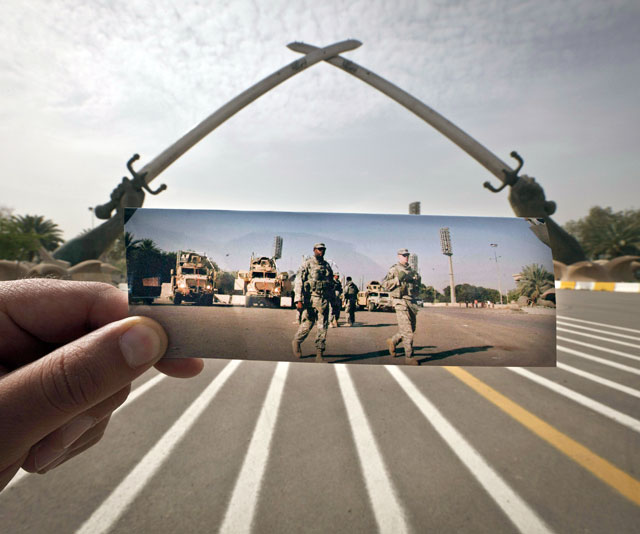
A March 14, 2013, photo of the crossed swords monument was shot at the same location as an Associated Press photograph taken by Karim Kadim of U.S. soldiers on Nov. 16, 2008. The crossed-sword archways that Saddam Hussein commissioned during Iraq's nearly eight-year war with Iran stand defiantly on a little-used parade ground inside the Green Zone, the fortified district that houses the sprawling U.S. Embassy and several government offices. Iraqi officials began tearing down the archways in 2007 but quickly halted those plans and set about restoring the monument two years ago. (Maya Alleruzzo/AP)
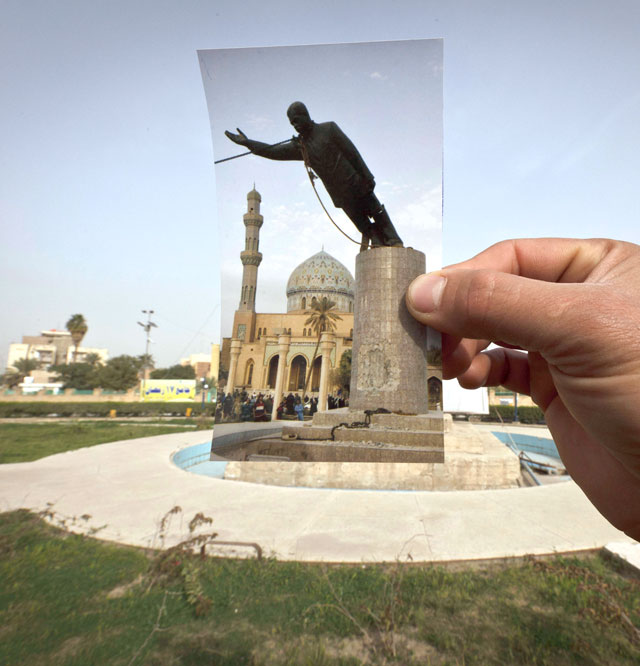
A view of Firdous Square on March 13, 2013, at the site of an Associated Press photograph taken by Jerome Delay as the statue of Saddam Hussein was pulled down by U.S. forces and Iraqis on April 9, 2003. (Maya Alleruzzo/AP)

A March 12, 2013, photo shows a general view of Abu Nawas park in Baghdad, at the site of a photograph taken by Maya Alleruzzo showing Iraqi orphans playing soccer with a U.S. soldier from the Third Infantry Division in April 2003. The park that runs along Abu Nawas Street, named after an Arabic poet, is now a popular destination for families who are drawn to the manicured gardens, playgrounds and restaurants famous for a fish called mazgouf. Ten years ago, the park was home to a tribe of children orphaned by the war and was rife with crime. (Maya Alleruzzo/AP)
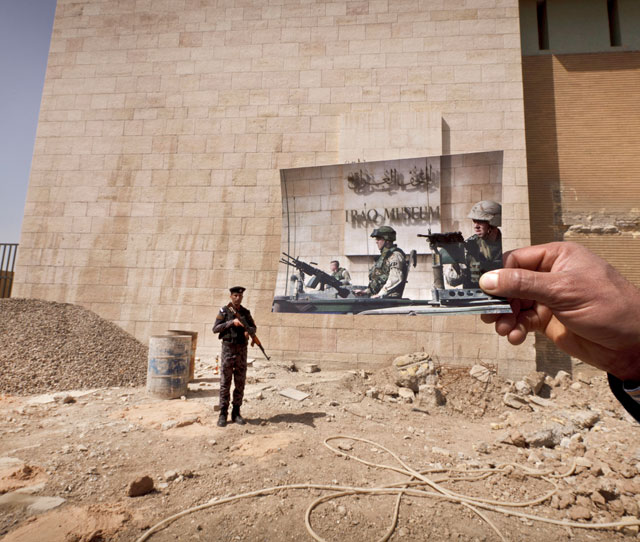
Iraqi police officer Ahmed Naji stands on the grounds of the Iraqi National Museum, March 13, 2013, the site of an Associated Press photograph of U.S. soldiers on guard outside the museum taken by Anja Niedringhaus on Nov. 11, 2003. (Maya Alleruzzo/AP)

Shoppers stroll through Baghdad's busy shopping district of Karrada, at the same site of an Associated Press photo taken by Hadi Mizban on Sept. 29, 2008, after a bombing that killed 22 people on March 16, 2013. Bloody attacks launched by terrorists who thrived in the post-invasion chaos are painfully still frequent, albeit less so than a few years back, and sectarian and ethnic rivalries are again tearing at the fabric of national unity. (Maya Alleruzzo/AP)
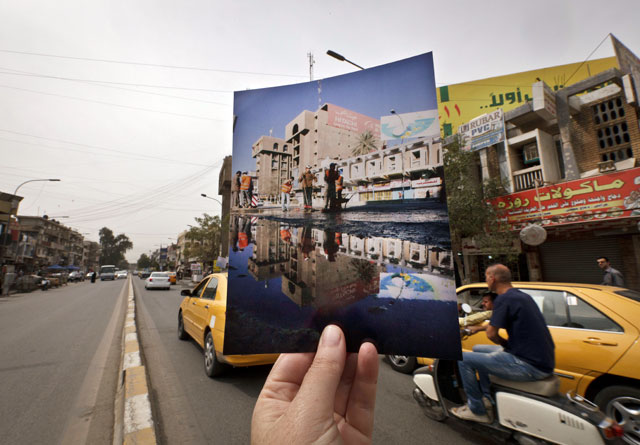
Motorists fill the main street in Baghdad's busy shopping district of Karrada on March 16, 2013, the same site where an Associated Press photograph was taken by Hadi Mizban on March 7, 2008, after a bombing that killed 53 people and wounded 130. Bloody attacks launched by terrorists, who thrived in the post-invasion chaos, are painfully still frequent, albeit less so than a few years back, and sectarian and ethnic rivalries are again tearing at the fabric of national unity. (Maya Alleruzzo/AP)
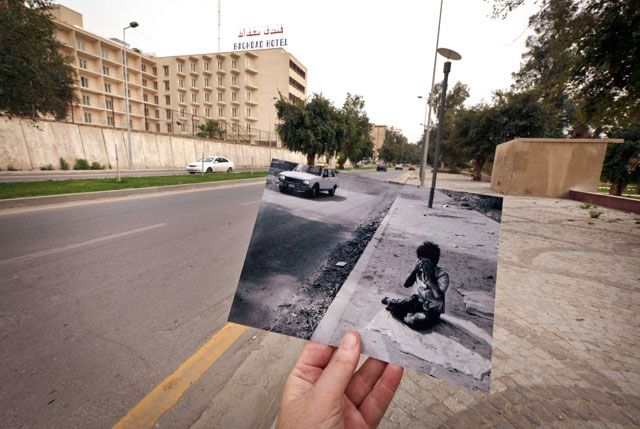
A view of Abu Nawas Street in Baghdad on March 12, 2013, at the site of a photograph of Iraqi orphan Fady al-Sadik walking on the street, taken by photographer Maya Alleruzzo in April, 2003. The park that runs along Abu Nawas Street, named for an Arabic poet, is now a popular destination for families who are drawn to the manicured gardens, playgrounds and restaurants famous for a fish called mazgouf. Ten years ago, the park was home to a tribe of children orphaned by the war and was rife with crime. (Maya Alleruzzo/AP)
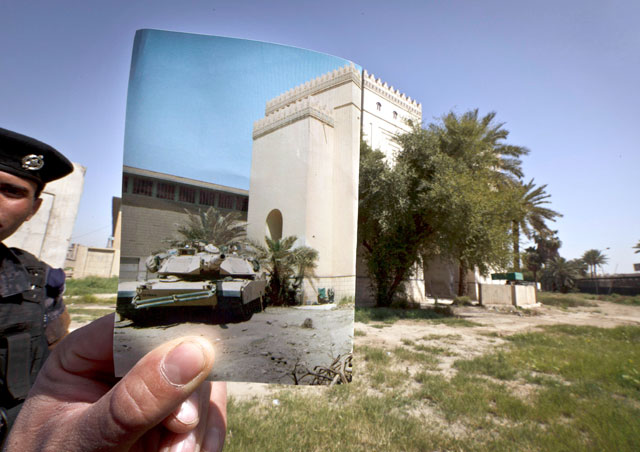
Iraqi policeman Ahmed Naji stands on the grounds of the Iraqi National Museum, March 13, 2013, at the site of an Associated Press photograph by Murad Sezer showing a U.S. Army tank parked outside the Iraqi National Museum in Baghdad May 6, 2003. (Maya Alleruzzo/AP)